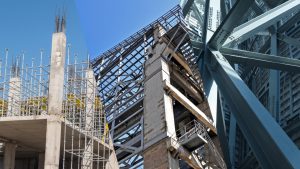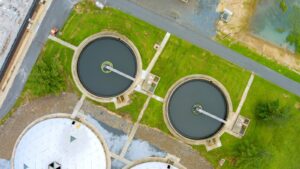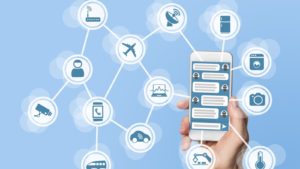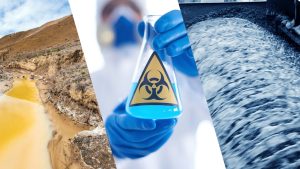Wastewater reclamation refers to the process of wastewater being treated for reuse. Australia has been no stranger to wastewater reclamation operations. Since the 1900s, the country has adopted stringent policies to collect and treat wastewater. However, the need to manage and treat it thoroughly is now more urgent than ever. With the devastating drought that occurred for two to three years until 2009 in Australia and the recent bushfires that have consistently occurred since 2020, the rainfall in Australia is significantly low. In other words, Australia receives less fresh water. This is why wastewater reclamation has been a trending topic in the country for some period. Governments and wastewater managers have been encouraged to infuse modern methods, including industry 4.0 technologies, to make the reclamation process much more manageable. This article will elaborate on some modern ways of optimising wastewater reclamation operations.
Three Ways of Optimising Wastewater Reclamation Operations
There are currently different ways to ensure quality wastewater is produced by adopting advanced reclamation treatment technology. While the majority of treatment processes have existed for a long time, what makes them modern is the incorporation of industry 4.0 technologies such as Artificial Intelligence (AI), Digital Twins, Internet of Things (IoT), GIS technology, data analytics and more. These technologies can predict future breakdowns, recommend solutions, provide detailed reports to make smarter and more reliable decisions, and accurately monitor wastewater quality. Here are three wastewater reclamation operations which should be merged with advanced technologies to optimise wastewater reuse operations better:
Enhanced Primary Treatment
Sometimes referred to as Chemically Enhanced Primary Treatment (CEPT), this form of modern solution infuses metal salts into the primary sedimentation process. Consequently, coagulants are formed and are combined with solids, forcing them to settle more quickly. Usually, wastewater is treated for long periods in the sedimentation tank for the solids to settle in the bottom. This more advanced form of primary treatment makes the process faster. Additionally, this treatment removes phosphorus and its associated biochemical oxygens. Since this is much faster, wastewater asset managers can utilise smaller basins, which helps wastewater flow more efficiently. Hence, once the solids are settled, they are removed and afterwards sent to be disinfected and neutralised. It is also a much cheaper and more straightforward method than conventional primary treatment.
Ultra-Low Energy Biological Treatment
Ultra-low energy biological treatment refers to a form of ensuring water is cleaned for reuse purposes. This solution uses bacteria, protozoa and other unique species of microbes to clean wastewater, which breaks the organic pollutants. As a result, a flocculation effect occurs, separating organic matter from the wastewater. This makes it easier to get rid of solid waste. Biological wastewater can specialise in aerobic, anaerobic and anoxic treatments. Each refers to the type of microorganisms used. For instance, microorganisms that require oxygen are aerobic, whereas anaerobic does not. On the other hand, anoxic uses other molecules to remove chemicals such as sulphate and nitrate from wastewater. The central role of biological industrial wastewater treatment is to optimise microbial decomposition to break down the industrial waste present. It is sometimes merged with physical and chemical treatments, although it could be expensive.
Advanced Sludge Treatment
Advanced sludge is a more feasible treatment method that carries out the functions of conventional secondary wastewater treatment. It either implements biological processes or physicochemical processes, although sometimes it is combined. Nutrient pollutants such as nitrogen and phosphorus are removed using biological processes. Previously infusing biological processes was an additional step regarded as a part of tertiary treatment. Therefore, adopting an advanced sludge treatment method means that the steps in secondary and tertiary treatments are combined to guarantee higher quality in wastewater. If a physicochemical approach is used, mechanisms such as deep-bed filtration, floating media filtration, and membrane filtration are used. Combining these two processes essentially helps wastewater managers successfully remove a wide range of challenging contaminants.
Infusing Industry 4.0 Technology
While the above three methods can increase wastewater quality significantly, to optimise overall operations, utility managers should use industry 4.0 technologies in their reclamation activities. Here’s how infusing even three advanced technological solutions can help wastewater managers:
- Data analytics: Occasional maintenance is required to ensure the assets used to treat wastewater perform in their best form. Data analytics automates the monitoring of all assets. By integrating the power of predictive and prescriptive analytics, wastewater asset managers can receive advance notice of future malfunctions and take active steps to prevent them. Thus, managers can reduce downtime, and the public utility sector can save money.
- Real-Time Virtual Simulations: Adopt the power of digital twins to design compact and robust simulation tanks and other assets required for wastewater treatment. Consider which materials are most eco-friendly and strong to handle the pressure of water and withstand weather conditions throughout the test of time. Carry out simulations to assess disaster management and stay prepared to face any situation.
GIS Technology: The wastewater treatment process is not central to one area. There is an underground system that connects all wastewater that runs throughout the entire city. By incorporating GIS technology, managers can enjoy an overview of this vast network. The high-resolution images can detect any fluctuations in the soil, pipes, tanks and other components that could affect wastewater quality.
Quality Reclamation Has Never Been Easier
Ensuring that recycled water is thoroughly cleaned has been an issue that wastewater managers have struggled with. They had to depend on wastewater experts to monitor their condition consistently, and when a problem with the water or an asset was detected, it would be too late to take action. The process that used to take days to verify the standard of quality of wastewater can now be completed in a few seconds. With an intelligent dashboard that provides an overview of all processes, assess each phase of the recycling and distribution of wastewater in real-time. Modern technologies do the hard work for you. It finds the root cause and recommends solutions according to your finances and resources. This means you must act promptly whenever the system warns you of future risks. Can it get any more simple and easier?







